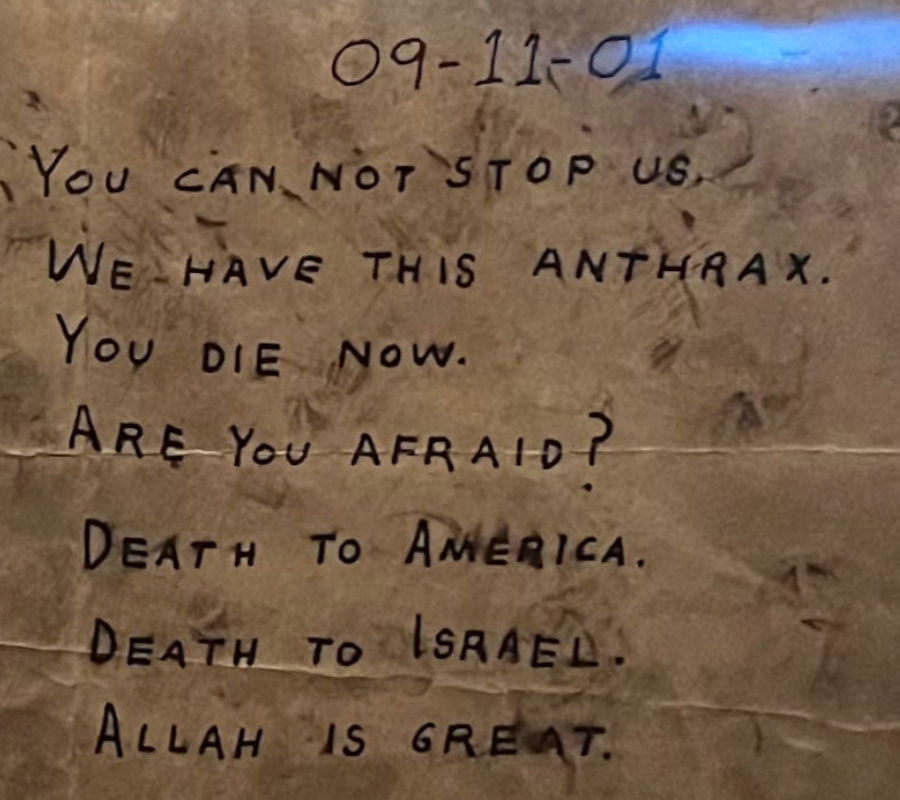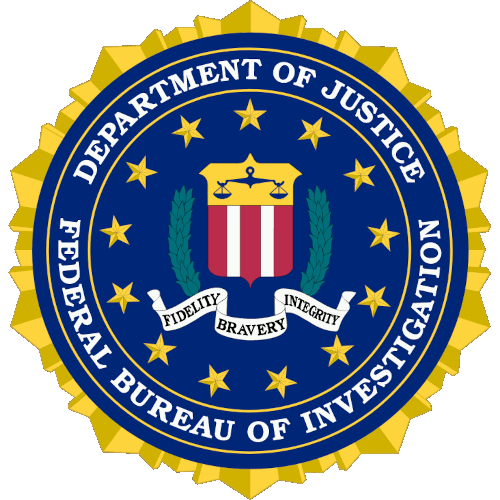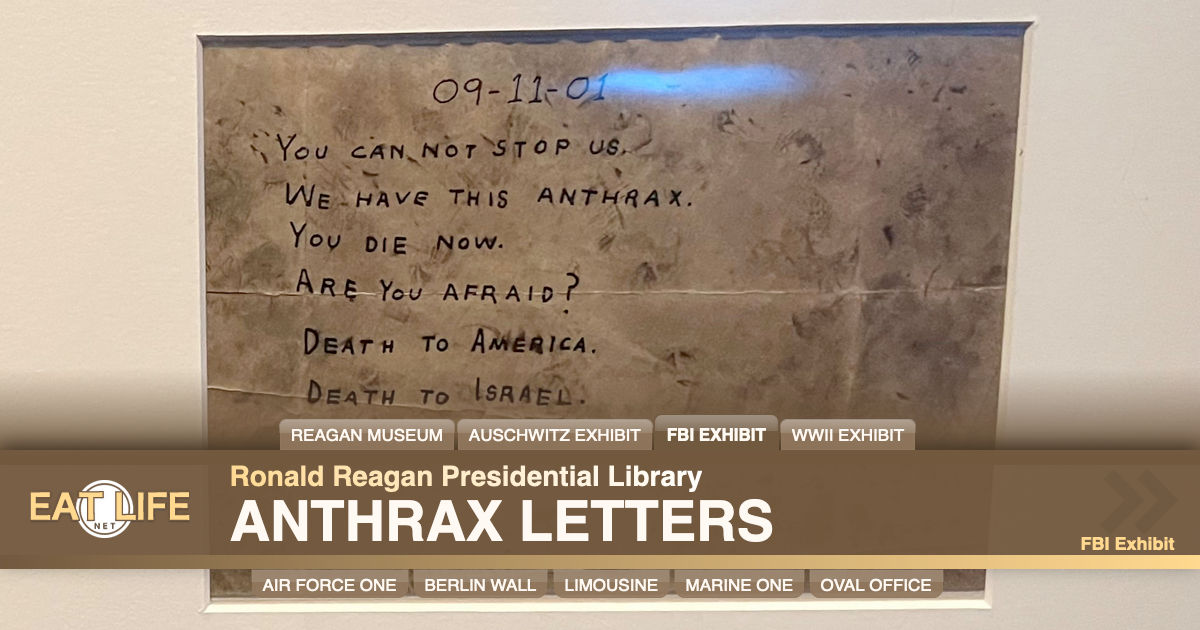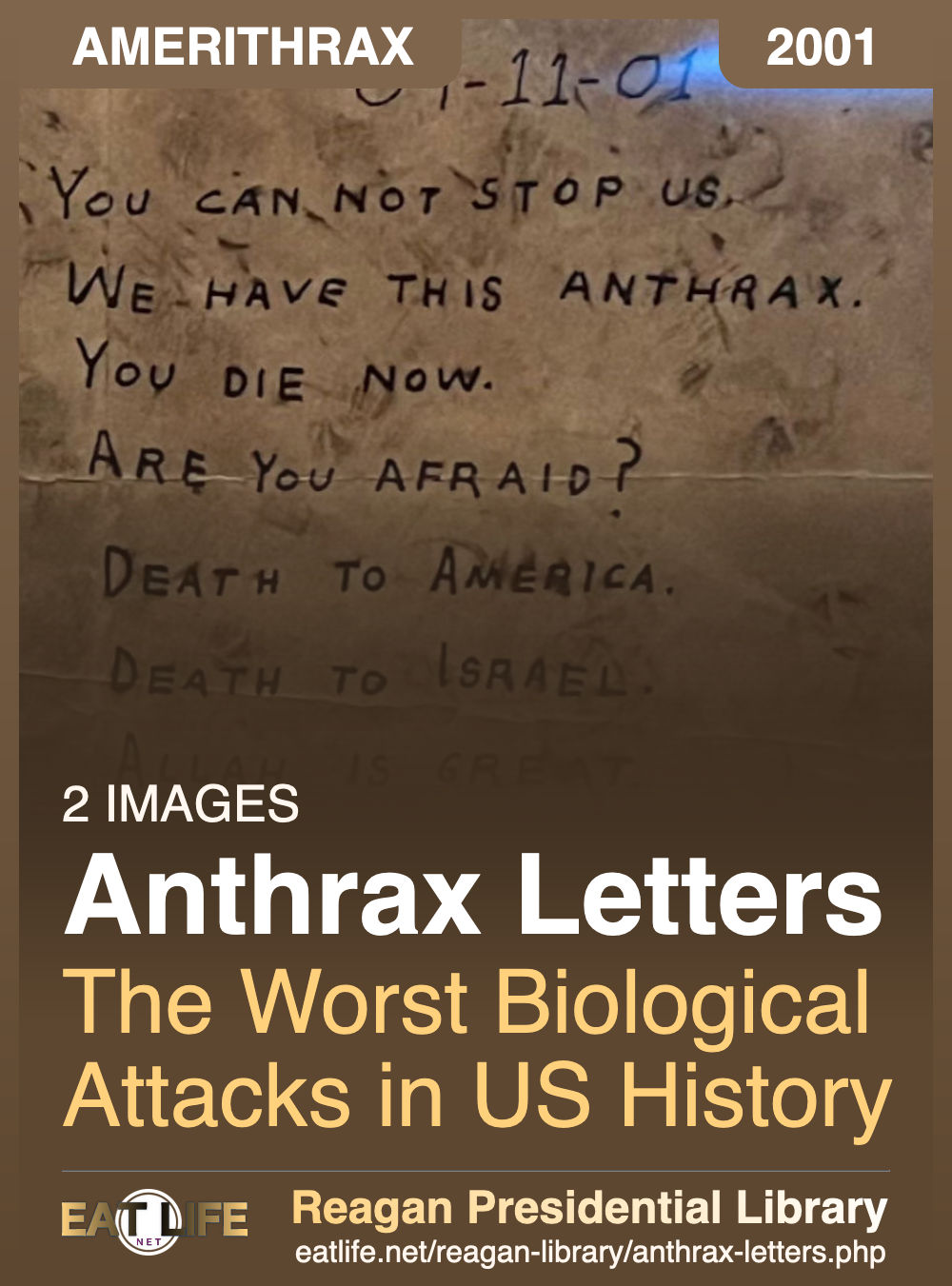AMERITHRAX:
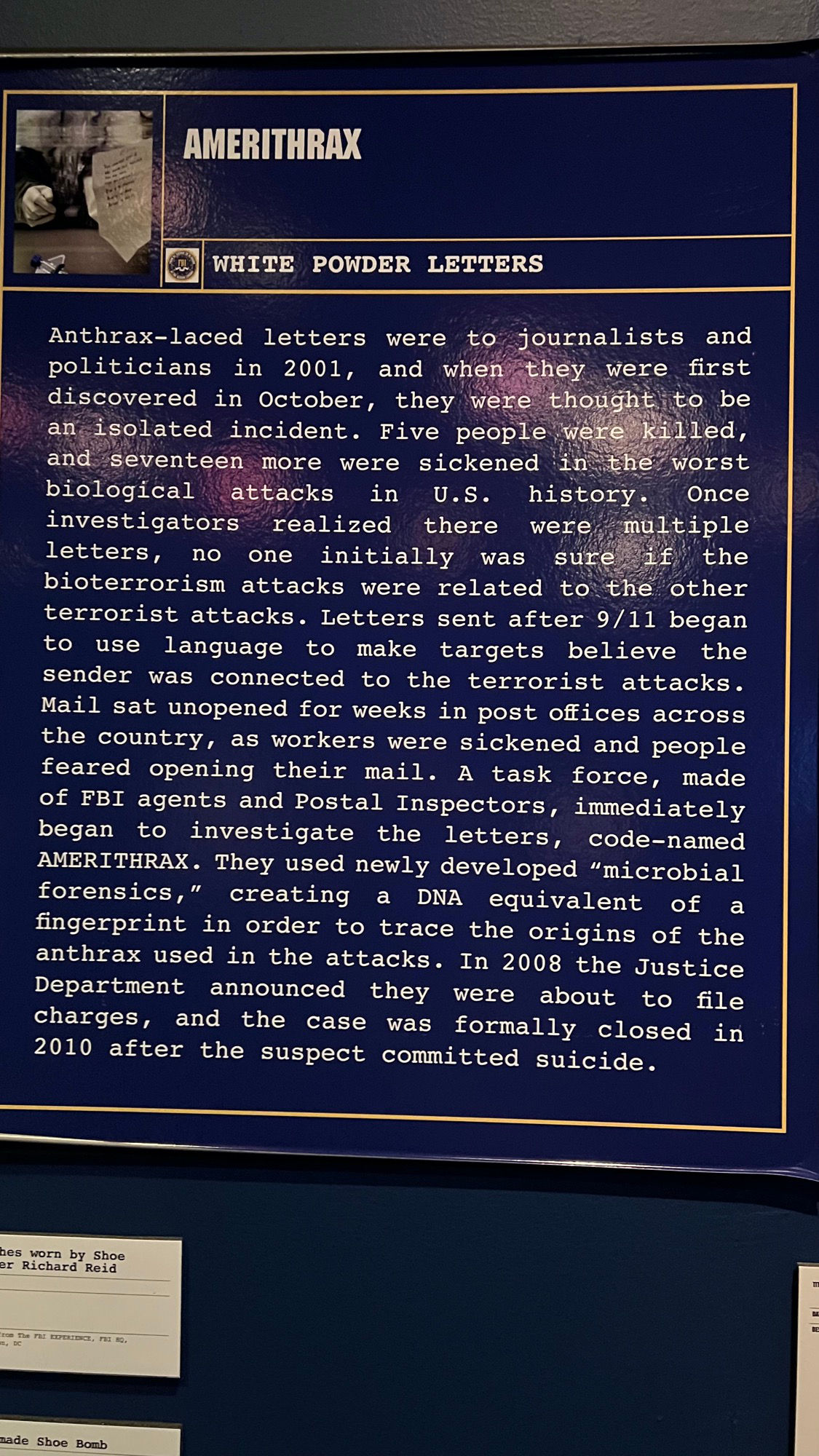
AMERITHRAX
Anthrax-laced letters were mailed to journalists and politicians in 2001, and when they were first discovered in October, they were thought to be an isolated incident. Five people were killed, and seventeen more were sickened in the worst biological attacks in U.S. history. Once investigators realized there were multiple letters, no one initially was sure if the bioterrorism attacks were related to the other terrorist attacks. Letters sent after 9/11 began to use language to make targets believe the sender was connected to the terrorist attacks.
Mail sat unopened for weeks in post offices across the country, as workers were sickened and people feared opening their mail.
A task force, made of FBI agents and Postal Inspectors, immediately began to investigate the letters, code-named AMERITHRAX. They used newly developed "microbial forensics," creating a DNA equivalent of a fingerprint in order to trace the origins of the anthrax used in the attacks. In 2008 the Justice Department announced they were about to file charges, and the case was formally closed in 2010 after the suspect committed suicide.
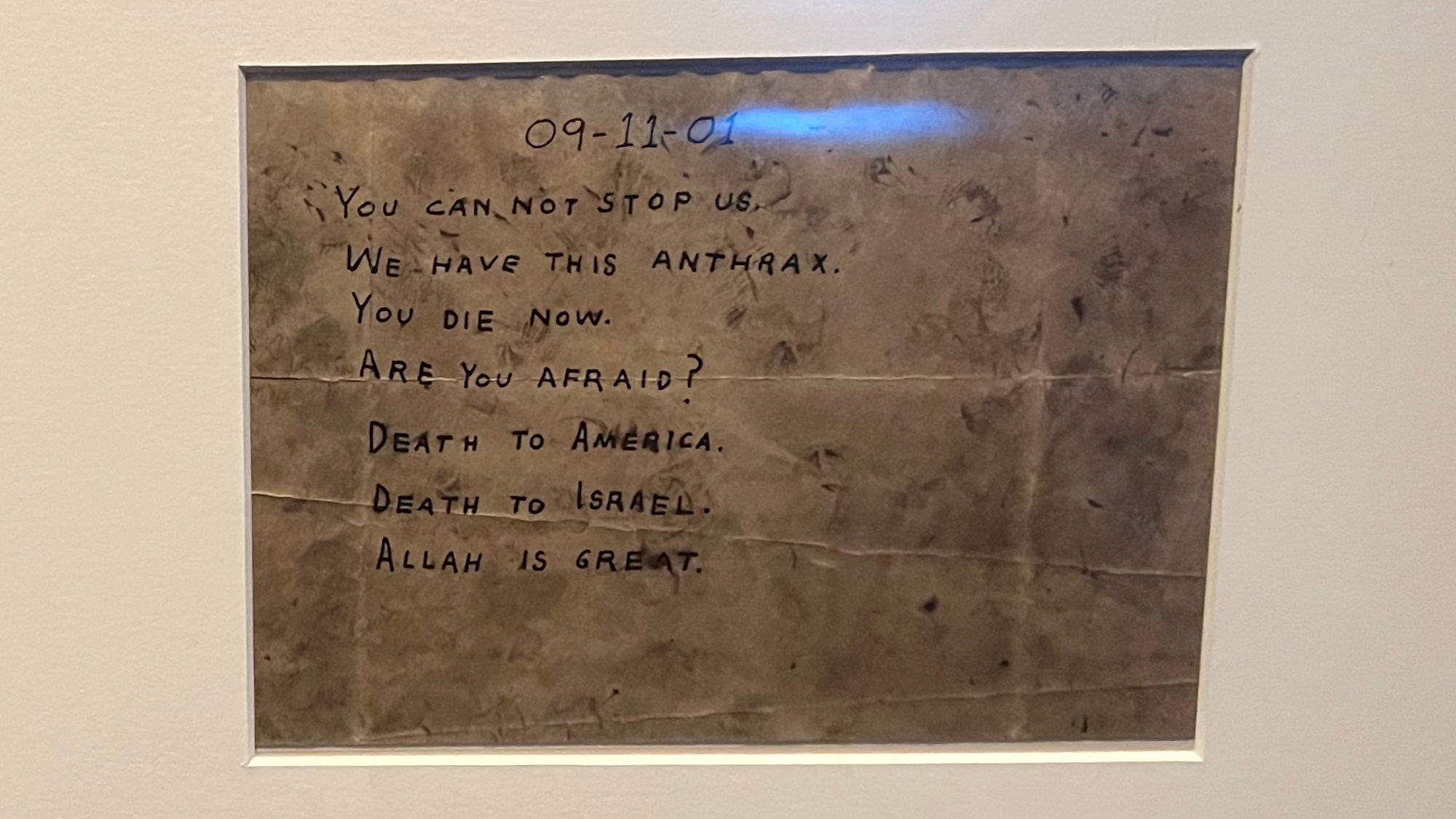
September 11, 2001
A letter addressed to Senator Patrick Leahy was found by FBI and Environmental Protection Agency (EPA) hazardous materials personnel on November 16, 2001, in one of the 280 barrels of unopened mail collected from Capitol Hill after an anthrax-contaminated letter was sent to Senator Tom Daschle. They were the last letters discovered. It was opened by experts at the Ft. Detrick's biomedical research lab and eventually decontaminated.
FBIAMERITHRAX
Soon after the terrorist attacks of 9/11, letters laced with anthrax began appearing in the U.S. mail. Five Americans were killed and 17 were sickened in what became the worst biological attacks in U.S. history.The ensuing investigation by the FBI and its partners-code-named "Amerithrax"-has been one of the largest and most complex in the history of law enforcement.
In August 2008, Department of Justice and FBI officials announced a breakthrough in the case and released documents and information showing that charges were about to be brought against Dr. Bruce Ivins, who took his own life before those charges could be filed. On February 19, 2010, the Justice Department, the FBI, and the U.S. Postal Inspection Service formally concluded the investigation into the 2001 anthrax attacks and issued an Investigative Summary.
The Amerithrax Task Force-which consisted of roughly 25 to 30 full-time investigators from the FBI, the U.S. Postal Inspection Service, and other law enforcement agencies, as well as federal prosecutors from the District of Columbia and the Justice Department's Counterterrorism Section-expended hundreds of thousands of investigator work hours on this case. Their efforts involved more than 10,000 witness interviews on six different continents, the execution of 80 searches, and the recovery of more than 6,000 items of potential evidence during the course of the investigation.
The case involved the issuance of more than 5,750 grand jury subpoenas and the collection of 5,730 environmental samples from 60 site locations. In addition, new scientific methods were developed that ultimately led to the break in the case-methods that could have a far-reaching impact on future investigations.
WIKIPEDIA The 2001 Anthrax Attacks
Also known as Amerithrax (a combination of "America" and "anthrax", from its FBI case name), occurred in the United States over the course of several weeks beginning on September 18, 2001, one week after the September 11 terrorist attacks. Letters containing anthrax spores were mailed to several news media offices and to Senators Tom Daschle and Patrick Leahy, killing five people and infecting 17 others.According to the FBI, the ensuing investigation became "one of the largest and most complex in the history of law enforcement".
A major focus in the early years of the investigation was bioweapons expert Steven Hatfill, who was eventually exonerated. Bruce Edwards Ivins, a scientist at the government's biodefense labs at Fort Detrick in Frederick, Maryland, became a focus around April 4, 2005. On April 11, 2007, Ivins was put under periodic surveillance and an FBI document stated that he was "an extremely sensitive suspect in the 2001 anthrax attacks". On July 29, 2008, Ivins committed suicide with an overdose of acetaminophen (Tylenol).
Federal prosecutors declared Ivins the sole perpetrator on August 6, 2008, based on DNA evidence leading to an anthrax vial in his lab. Two days later, Senator Chuck Grassley and Representative Rush D. Holt Jr. called for hearings into the Department of Justice and FBI's handling of the investigation. The FBI formally closed its investigation on February 19, 2010.
Anthrax Letters2008
The FBI requested a review of the scientific methods used in their investigation from the National Academy of Sciences, which released their findings in the 2011 report Review of the Scientific Approaches Used During the FBI's Investigation of the 2001 Anthrax Letters. The report cast doubt on the government's conclusion that Ivins was the perpetrator, finding that the type of anthrax used in the letters was correctly identified as the Ames strain of the bacterium, but that there was insufficient scientific evidence for the FBI's assertion that it originated from Ivins' laboratory.The FBI responded by saying that the review panel asserted that it would not be possible to reach a definite conclusion based on science alone, and said that a combination of factors led the FBI to conclude that Ivins had been the perpetrator. Some information is still sealed concerning the case and Ivins' mental health. The government settled lawsuits that were filed by the widow of the first anthrax victim Bob Stevens for $2.5 million with no admission of liability. The settlement was reached solely for the purpose of "avoiding the expenses and risks of further litigations", according to a statement in the agreement.
The anthrax attacks began just a week after the September 11 attacks. The attacks came in two waves. The first set of letters containing anthrax had a Trenton, New Jersey, postmark dated September 18, 2001. Five letters are believed to have been mailed at this time to ABC News, CBS News, NBC News and the New York Post, all located in New York City, and to the National Enquirer at American Media, Inc., (AMI) in Boca Raton, Florida.
The first known victim of the attacks, Robert Stevens, who worked at the Sun tabloid, also published by AMI, died on October 5, 2001, four days after entering a Florida hospital with an undiagnosed illness that caused him to vomit and be short of breath. The presumed letter containing the anthrax which killed Stevens was never found. Only the New York Post and NBC News letters were actually identified; the existence of the other three letters is inferred because individuals at ABC, CBS and AMI became infected with anthrax. Scientists examining the anthrax from the New York Post letter said it was a clumped coarse brown granular material which looked similar to dog food.
Two more anthrax letters, bearing the same Trenton postmark, were dated October 9, three weeks after the first mailing. The letters were addressed to two U.S. Senators, Tom Daschle of South Dakota and Patrick Leahy of Vermont. At the time, Daschle was the Senate majority leader and Leahy was head of the Senate Judiciary Committee; both were members of the Democratic Party. The Daschle letter was opened by an aide, Grant Leslie, on October 15, after which the government mail service was immediately shut down. The unopened Leahy letter was discovered in an impounded mailbag on November 16. The Leahy letter had been misdirected to the State Department mail annex in Sterling, Virginia, because a ZIP code was misread; a postal worker there, David Hose, contracted inhalational anthrax.
The letters sent to the media contained a coarse brown material, while the letters sent to the two U.S. Senators contained a fine powder.More potent than the first anthrax letters, the material in the Senate letters was a highly refined dry powder consisting of about one gram of nearly pure spores. A series of conflicting news reports appeared, some claiming the powders had been "weaponized" with silica. Bioweapons experts who later viewed images of the anthrax used in the attacks saw no indication of "weaponization". Tests at Sandia National Laboratories in early 2002 confirmed that the attack powders were not weaponized.
At least 22 people developed anthrax infections, 11 of whom contracted the especially life-threatening inhalational variety. Five died of inhalational anthrax: Stevens; two employees of the Brentwood mail facility in Washington, D.C. (Thomas Morris Jr. and Joseph Curseen), and two whose source of exposure to the bacteria is still unknown: Kathy Nguyen, a Vietnamese immigrant resident of the New York City borough of the Bronx who worked in the city, and the last known victim, Ottilie Lundgren, a 94-year-old widow of a prominent judge from Oxford, Connecticut.
Because it took so long to identify a culprit, the 2001 anthrax attacks have been compared to the Unabomber attacks which took place from 1978 to 1995.
